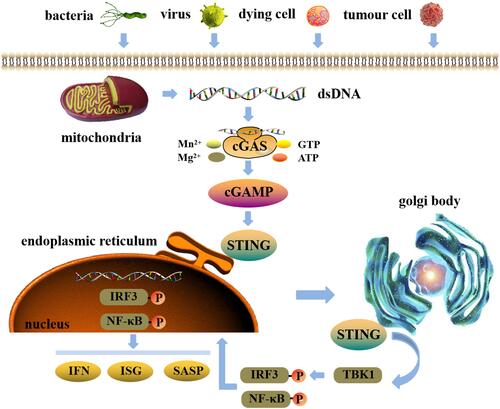Figures & data
Figure 1 The cGAS-STING signaling pathway. Exogenous and endogenous DNA activate cGAS to generate second messenger 2ʹ,3ʹ-cGAMP. After 2ʹ,3ʹ-cGAMP binds to the downstream receptor protein STING, STING transfers to golgi body and polymerization occurs, and then, TBK1, IRF3 and NF-κB were recruited. This promotes the phosphorylation of IRF3 and NF-κB and facilitates their entry into the nucleus, finally, the transcription of genes associated with inflammatory factors is activated.

Table 1 Clinical Trials of STING Agonists
